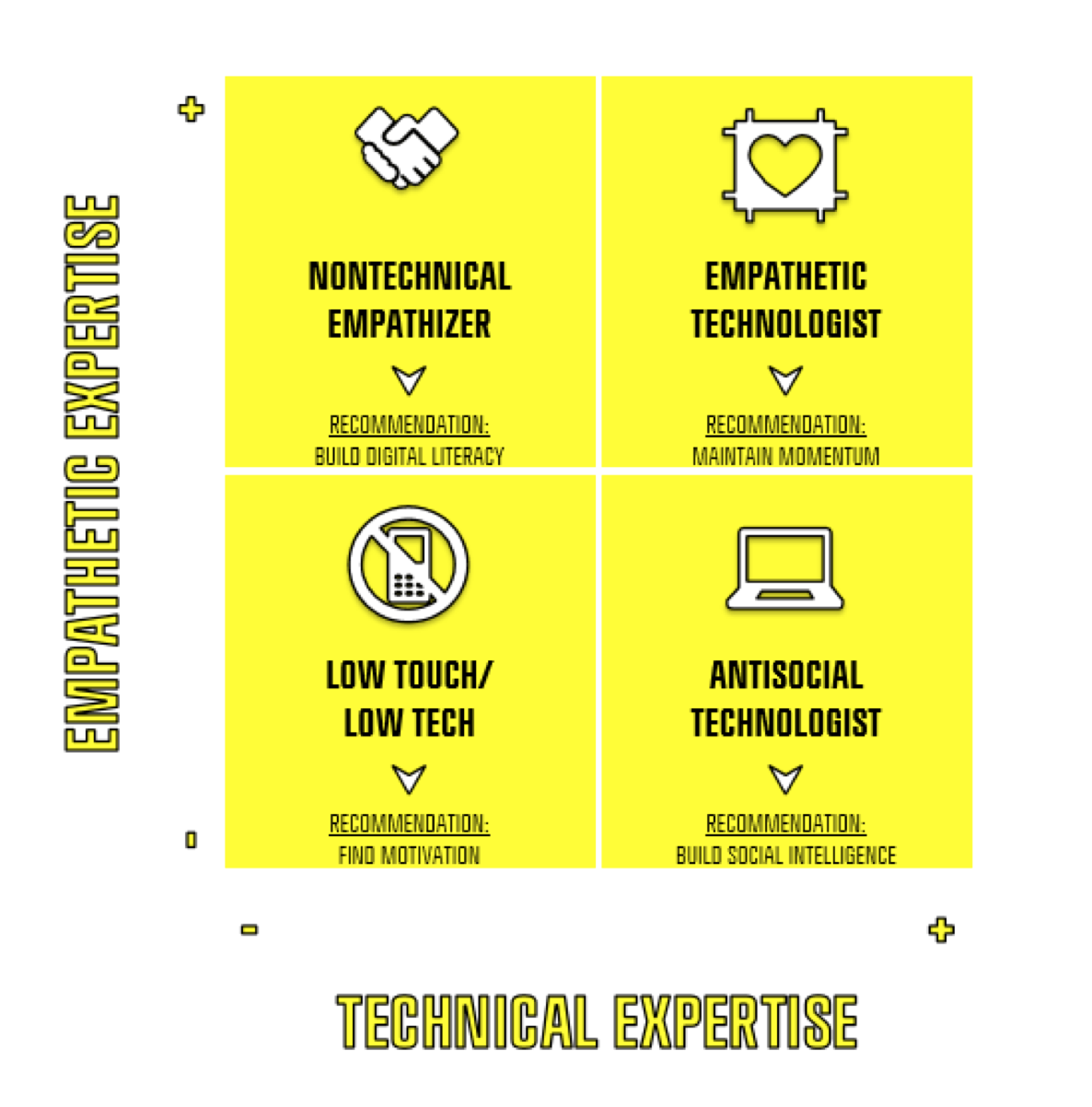California Management Review
California Management Review is a premier professional management journal for practitioners published at UC Berkeley Haas School of Business.

Image Credit | Josh Calabrese
Many have tried to explain the success of Apple over the years. It has been explained in terms of innovation, branding and business models.1 Yet, an alternative explanation also exists: In my interpretation, Apple has gained success because they’re so-called “empathetic technologists” – that is, they balance their digital capabilities with a capacity of truly understanding what consumers want and feel.
“The Feeling Economy: Managing in the Next Generation of Artificial Intelligence (AI)” by Ming-Hui Huang, Roland Rust, & Vojislav Maksimovic. (Vol. 61/4) 2019.
To be sure, empathy is not the word that most people would assign to the late Steve Jobs, who was infamous for aggressive outbursts and intentionally ignoring market research. Yet, he was arguably accurate in predicting the trajectory of consumer behavior, as seen with the advent of personal computers, smart phones and music streaming. As noted by Job’s biographer, Walter Isaacson: “When he hurt people, it was not because he was lacking in emotional awareness,” writes Isaacson. “Quite the contrary: He could size people up, understand their inner thoughts, and know how to relate to them, cajole them, or hurt them at will.”2
Hence, he conveyed empathy (truly understanding the end users and how the consumer culture would evolve) through his impressive capacity for accurately predicting the social context of the future – while being fully aware of the technological advances that it required. In combination, this turned Apple into an empathetic technologist.
But Apple is not alone. Most industries are currently being challenged by digital technologies and changing consumption patterns. While most organizations have addressed these challenges by initiating a digital transformation journey, i.e. making the organization more digital, few have embarked on an empathetic transformation journey, i.e. making the organization more empathetic.3 This is unfortunate, as the future arguably belongs to empathetic technologists. In the following, the key characteristics of empathetic technologists will be further unpacked.
The notion of empathetic technologists is based upon my many years of research on digital transformation and the competitive benefits of empathy – and it integrates aspects of both lines of research.4 Empathetic technologists can be conceptualized according to two dimensions (see the figure below). On the one hand, they have the technical expertise, such as coding, analytics and computational literacy. On the other hand, they have empathetic expertise, such as being able to understand the thought-processes and feelings of another human being – and being able to put oneself in the shoes of another person. When combined, a 2x2 matrix appears. In the following, I will go through each cell in the matrix.

Low Touch/Low Tech: When neither empathy nor technical expertise is available, the organization can be said to be ‘low touch/low tech’. Such organizations neither have the technical nor emotional capacity to deliver digital solutions or connect with customers. Hence, they typically comprise conventional manufacturing companies that are oriented towards efficient operations driven by manual labor.
An example of low touch/low tech can arguably be seen in conventional taxi companies. Here, the taxi drivers often have very little interest in fully understanding the passenger’s needs, preferences and feelings, as it is a transactional service – and little technological expertise is needed, in contrast to e.g. Uber. Hence, conventional taxi companies end up in the low touch/low tech quadrant.
The problem for these organizations is that they are not sufficiently interested in technology nor understanding their customers. Hence, they can easily become obsolete in a dynamic market, driven by changing customer preferences and ever-evolving technologies. Therefore, the key imperative for these organizations is to find their motivation, i.e. a common purpose, that creates the needed energy in the organization to move it forward and evolve.
Antisocial Technologist: When an organization has technical expertise, but not a sufficient level of empathy, the result is an antisocial technologist. That is, an organization where emphasis is put on technological opportunities rather than identifying customer needs. Hence, they represent a technological orientation to innovation rather than being truly market-oriented.
An example of such an organization is arguably Facebook. While the social network platform has piles of data and the analytical capacities for explaining and predicting behavior, they often overlook the negative user sentiments to their data uses. As illustrated by various scandals, such as the Cambridge Analytica turmoil, the social platform is (too) often preoccupied with the technological opportunities for capturing value, rather than fully comprehending how that value capture may influence the feelings and lives of the end users. Hence, they come across as antisocial technologists – resulting in the paradox of being an antisocial social network.
The problem for these organizations is that they’re too preoccupied with technological opportunities, and therefore, may overlook important concerns that customers may have. Put differently, the technological developments may take on a life of their own. Doing so, may result in high-profile scandals or becoming irrelevant for users. Hence, the key imperative for these organizations is to build social intelligence that permeates all levels of the organization.
Nontechnical Empathizer: When an organization has a high degree of empathy, but not a sufficient level of technical expertise, the organization can be entitled as a nontechnical empathizer. That is, an organization that creates value through its human connections and interactions – but not so much through the application of technologies and the digital domain.
Examples of this archetype is apparent in the service and experience industries. That is, industries that are fueled by the satisfaction of customer needs and the analog delivery of a service experience. Consider the appeal of great salespeople, teachers or psychologists. What they have in common is that they can fully understand the customer, student or client, their needs and feelings – and they are able to translate this into a customized service experience.
The problem for these organizations is that they risk falling behind on important digital developments, as made apparent when COVID-19 lockdowns created a need for salespeople and teachers to obtain digital capabilities overnight. Hence, the key imperative is to build digital literacy to accompany their preexisting empathy expertise.
Empathetic Technologist: When an organization has high degrees of expertise within both empathy and technology, the organization can be entitled as an empathetic technologist. That is, an organization that creates value from the interface between having a deep understanding of users and the underlying technology. Hence, they balance, bridge and benefit from the best of both worlds.
Examples of this archetype can be seen at both Amazon and Netflix. Amazon has earned a reputation for delivering solid and reliable customer service, while simultaneously being at the forefront of cloud computing, AI and analytics. Put differently, they master both the human and technological aspects of their business. Moreover, Netflix has combined its algorithms and big data to create solid user understanding – while also collaborating with ethnographers to add a more qualitative understanding to complement their quantitative output. Such an approach has been conceptualized as so-called ‘informed empathy’.5 It should be noted, however, that Netflix have currently been experiencing challenges with their customer base, which may suggest that their empathy is in decline.
The key imperative for these organizations is to maintain momentum. As the organizations are doing well in both domains, it becomes a breeding ground for organizational complacency. Hence, it is important to maintain the required levels in both domains – particularly as both customer behaviors and technological developments are in a constant state of motion and development.
As it can be seen from this simple typology, very different scenarios emerge from combining the two dimensions. Yet, it is arguably the empathetic technologists that are best positioned to gain a competitive edge in a digital market, where deep and authentic customer connection remains a key differentiator – but where customers also expect always-on availability and technological solutions to address their needs.
While the above matrix provides some broad contours for becoming an empathetic technologist, further details can be added to guide the process. Specifically, I suggest the following three steps.
Step 1: Conduct an ‘as-is analysis’ to place your organization in the matrix. Which archetype are you? Are there differences internally between departments or organizational layers? Depending on the archetype, you face different key imperatives as discussed above.
Step 2: Set goals and be explicit about where you want to be in the matrix and how to get there. For instance, you may be an antisocial technologist and want to become an empathetic technologist by 2023 – and therefore, you need to develop a culture of social intelligence. However, such an ambition requires a timeline and predefined tasks in order to become an actual plan.
Step 3: Launch and coordinate projects that help you reach your ambition. Corporate transformation and strategic renewal are predominantly effectuated through a living portfolio of projects, so these provide the engines that drive your organization forward.6 Which projects do you need to launch, manage and coordinate in order to reach your ambitions?
Gaining and maintaining a competitive edge have always been difficult. Yet, the difficulty has only increased with the acceleration of digital innovation and changing consumption patterns. Under these challenging conditions, the future belongs to the empathetic technologists.
How Apple Is Organized for Innovation (hbr.org) ; The world’s most valuable brand: Apple’s secret to success (bynder.com) ; Apple Business Model (strategyzer.com)
Before He Died, Steve Jobs Taught a Fascinating Lesson in Emotional Intelligence (Inc.com)
Pedersen CL. (2020). Empathy-based marketing. Psychology & Marketing 38(3): 470-480.
Ritter T, Pedersen CL. (2020). Digitization capability and the digitalization of business models in business-to-business firms: Past, present, and future. Industrial Marketing Management 86: 180-190.
Weill, Peter. (2012). The Benefits of Combining Data With Empathy. MIT Sloan Management Review. 54. 35-41.
Pedersen, CL., Ritter, T., & Andersen, T. J. (2020). A Project-based Perspective on Strategic Renewal. Strategic Management Review.
 Spotlight
Sayan Chatterjee
Spotlight
Sayan Chatterjee
 Spotlight
Mohammad Rajib Uddin et al.
Spotlight
Mohammad Rajib Uddin et al.